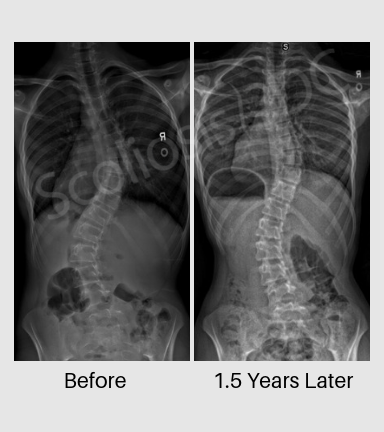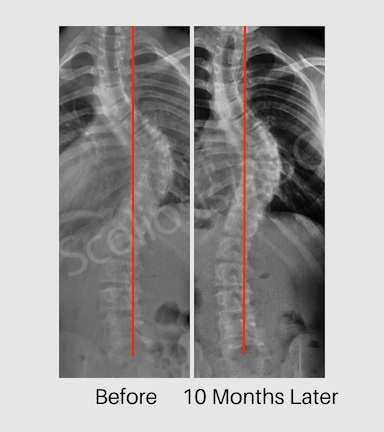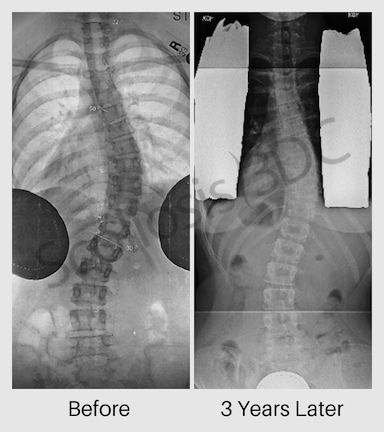Jump To Results List
Severe scoliosis is a spinal curvature measuring 45° or more (some sources use the 50º threshold) according to Cobb angle as measured on an AP/PA scoliosis x-ray. Often, patients with severe scoliosis were initially diagnosed with a milder curve that has progressed over time. Occasionally, however, scoliosis can go undetected, until it reaches a more severe level or it can come on suddenly. At that point, postural asymmetries (for example, at the shoulders, ribcage, or hips) can become more apparent. Because of increased asymmetric spinal loading, severe scoliosis is also more likely to continue to progress than smaller scoliosis curves. For this reason, severe scoliosis treatment is necessary, especially in growing adolescents.
Surgery for Severe Scoliosis Treatment
When scoliosis begins approaching or enters the severe stage, orthopedic surgeons will typically begin discussing the possibility of surgery with you and your child. While surgery is often presented as the only option, it’s worth getting a second opinion or investigating conservative treatment options. Scoliosis surgery poses a risk for complications and the need for revision surgery later on in life. One study puts the revision rate for surgery as high as almost 50%. Scoliosis surgery is typically more successful in children/adolescents rather than in adults. That said, in some very severe cases of scoliosis, surgery is necessary.
However, in the majority of cases it is possible to manage scoliosis conservatively if you/your child are motivated to avoid surgery. Consider for example, long-term natural history studies that say that people with scoliosis can live a long and healthy life even if untreated. Weinstein et al. found no evidence to link untreated late-onset idiopathic scoliosis (AIS) with increased mortality. Only patients with thoracic curves of more than 100° are at increased risk of death from cor pulmonale and right ventricular failure. For patients seeking to halt progression and/or decrease symptoms of scoliosis (i.e. postural asymmetries, muscular imbalances, fatigue, pain, etc.), non-surgical options are available.
Severe Scoliosis Treatment at Scoliosis 3DC
At Scoliosis 3DC, we have a two-pronged approach for severe scoliosis treatment to help patients work to manage their curve(s). Protocols include highly corrective scoliosis bracing (Cheneau-Gensingen brace) and Schroth scoliosis exercise (Schroth Best Practice). The Cheneau-Gensingen brace has the potential to help curves measuring 40° and higher, especially when there is growth opportunity. Historically, scoliosis braces have not been designed to address Cobb angles that fall into the severe scoliosis category. For years, doctors have insisted that other than surgery, there is little that can be done to address severe scoliosis.
Severe Scoliosis Treatment Results
As with scoliosis at a mild or moderate phase, brace treatment starting at a low bone age (i.e. Risser/skeletal maturity) offers the best hope for treatment outcome. While remaining growth poses a progression risk, remaining growth can also be taken advantage of for some degree of correction. However, results are also based on individual factors and curve reduction is not guaranteed. Please look through our severe scoliosis treatment results section, sub-divided into curves measuring between 45°-54° and ≥55°. We’ve had several juvenile and adolescent patients achieve considerable improvement utilizing the Cheneau-Gensingen brace and Schroth Best Practice exercise program.











